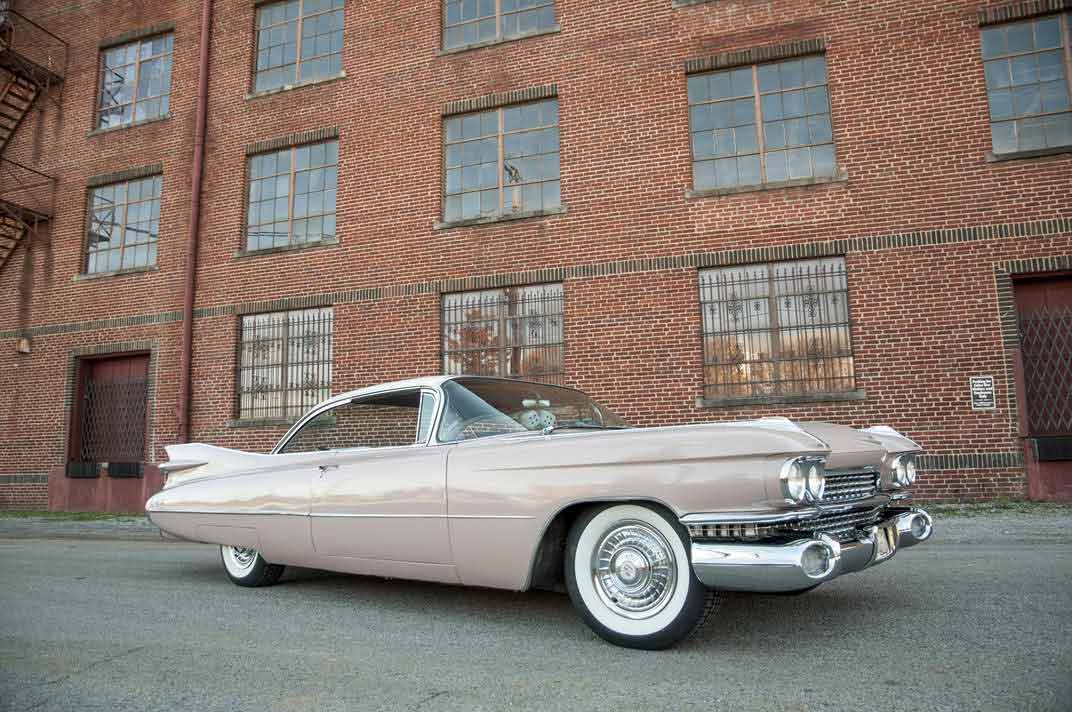
You've found the right place if you are looking for a classic vehicle to restore. This article will address a few important aspects before you buy a car. This includes how to inspect the vehicle before you begin the restoration process, the cost of the project, and who you should hire to perform the restoration work. You'll also learn how to choose a specialist for the job. And once you've made your choice, you can look forward to some exciting days ahead.
Selecting a classic vehicle
Whether you want a classic vintage vehicle or a modern sports car, you'll need to do your homework. Research the average price and the condition of the classic car that you are looking at for restoration. The NADA Guides section can help you determine the approximate price of the classic vehicle that interests you. Similar to the NADA Guides, you will find price ranges for classic cars.
A good wiring system is essential when restoring an old vehicle. The majority of classic vehicles have a very clean wiring system. But there are some things you should keep in mind to ensure a successful restoration. Examine wiring for frayed wires or old electrical tape that has been removed. Avoid wiring problems on classic vehicles if you can.

Before it can be restored, inspect it.
It is important to restore a classic vehicle's interior. You should inspect the interior for damage, fading and stains. Find any loose pieces and adjust your seats as necessary. Underneath, check for rust, loose paint, and loose trim. Also check the brake pedals. If the pedals become worn, it may be an indication that the vehicle is hot-rodded and its rear tires are being spun too often.
The first step is to choose the make and model of the car. However, the inspection is essential. A competent mechanic will be familiar with classic cars and terms such as bird cage, stroker, body filler, etc. They will also have knowledge about left-to-right conversions, restomods, as well as rust repair. Also, make sure to inspect the paintwork for any damage or repairs.
Restoration costs
How much does it cost to restore a classic car? It can vary greatly. Labor alone can easily run into the tens of thousands. A typical restoration of a mid-sized GM performance vehicle takes approximately three hundred fifty man hours. But the materials and parts involved can make the price tag even higher. For a quarter the price, you can restore your car back to its original glory.
Some parts are difficult to find for classic cars. You may need to order these parts as they are not always readily available. Also, you will need a large garage equipped with lifting equipment. Sometimes, you'll need a second pair. You don't have to spend your entire life saving for classic car restoration. There are still affordable options. Here are some ways you can save money on classic vehicle restoration.

Selecting a specialist
You should first research the different shops in your region before choosing a restoration specialist. Look for reviews and testimonials from clients to narrow down your list. You should also pay attention to what the shop specializes in. A shop that is a specialist on American classic cars may not the best fit for the restoration of a European classic. It is also better to get an accurate quote from a specialist who has had more experience.
It is important to consider the cost involved in restoring a classic vehicle. It is not easy to estimate the cost of classic car repair. However, specialists will be able provide estimates and estimates of when and how much it will cost. A specialist will also be available to provide you with advice about cost and schedule. This is especially important if the restoration is very extensive. You should earmark a budget for the work before starting the restoration.
FAQ
Is being a mechanic apprentice hard?
Although it's not an easy task, you will learn quickly and have many opportunities to advance.
You will need patience and perseverance. You should also be able to repair cars, trucks, and motorbikes.
Customers and relatives can exert a lot on you. But you should never feel pressured into making decisions you aren't comfortable with.
If you enjoy fixing cars, it could be a great career choice. You can make a decent living and build your business.
You might choose to take a different route. This is where you might be interested in becoming a technician.
This could involve using your technical knowledge to support other employees. You might be able to assist technicians in troubleshooting problems or teach them new techniques.
Another option is becoming a service advisor. Here, you'll provide advice and assistance to customers when they bring their cars to a garage.
It all depends on your goals. There are plenty of options available, and you can choose which suits you best.
How do I fix my vehicle as a hobby?
You might be interested in cars as a hobby. You could learn how to repair them, buy parts for them, sell them or just enjoy them. This would be a wonderful hobby if you're looking to find something completely different.
It's not an easy task to make this a full-time job. It takes dedication and hardwork. It requires a lot investment.
You might not have a compelling reason to get involved in the car industry.
To work as an automotive mechanic, do I need a degree? Can I do part-time studies?
Although it's not mandatory, a degree can help. Employers prefer candidates who have completed a full degree. It shows that you've worked hard and are determined to succeed.
However, it doesn't mean you can't still work while studying. Some universities permit students to do coursework during summer holidays and complete their studies later in a year. Students can also take classes part time throughout the academic year.
How long does it take to become a good mechanic?
Expert mechanics take years of practice and extensive experience. A professional mechanic will teach you how to fix cars.
You will need to spend some time in a garage to learn as much about cars and mechanics as possible. Mechanical engineering books will be required to learn about mechanics and design.
Additionally, you will need to attend an auto school.
It's crucial to start as soon as possible. Don't wait until you're older to begin studying automotive technology. Do you want to be a mechanic? Get started today!
What qualifications do I need to become a mechanic?
You will need to pass several exams in order to become a mechanic. These exams include:
-
A general knowledge assessment
-
A practical exam
-
An apprenticeship test
These tests are intended to make sure you have a solid understanding of the basics of mechanics before you can start your career as a mechanic.
After passing these tests, you will be eligible to become a mechanic. You'll still need an apprenticeship. This will involve training in your trade.
To learn all there is to know about fixing vehicles, you will need workshops and classes. Additionally, you will need to work with experienced mechanics.
For mechanic success, you'll need to be focused and meticulous. It is essential to pay attention to all aspects of vehicle repairs.
To be a successful mechanic, you will need patience and perseverance. This may not be the career path that you want if you aren't able to follow directions.
This job is for you if you are passionate about cars and love fixing them.
Statistics
- According to the BLS, the median annual salary for automotive service technicians and mechanics in the United States was $44,050 in May 2020. (uti.edu)
- There were 749,900 jobs available for automotive service technicians and mechanics in 2016, which is expected to grow by six percent through 2026. (jobhero.com)
- According to the BLS, total auto technician employment is expected to exceed 705,000 by 2030. (uti.edu)
External Links
How To
How to properly diagnose your car for repair
First, look at the symptoms of your car to determine if it needs repair. You can then follow these steps for a proper diagnosis of your vehicle.
-
Check engine lights. You should inspect the dashboard lights, such as the engine light indicator and the oil pressure gauge. Also, check the battery light indicator. It could indicate that your vehicle is having problems.
-
Take a look at the treads. Tires with worn treads could cause problems when handling or braking. You should also inspect the wheel treads. They should be smooth and clean. You can do this by taking off the wheels. Check the tread condition with a flashlight.
-
Observe the brake fluid level. You must always monitor the level of your brake fluid. This will ensure your brakes function properly. If the brake fluid level is low, your brakes might fail when you apply pressure to them.
-
The suspension system should be tested. The suspension system in vehicles absorbs vibrations and shocks. It allows for better control, smooth acceleration, and deceleration. Your vehicle might feel wobbly, or shake uncontrollably if it has a bad suspension. To determine whether your vehicle may have a suspension issue, you can try to put weight on the rear or front axle and watch the movement.
-
Examine the steering column. The steering column is used to link the steering wheel with the rest of vehicle's components. Sometimes, steering columns are damaged by accidents. You should replace the steering column if it is loose or weak.
-
Pay attention to the exhaust pipe. Exhaust pipes move gases from combustion chamber to atmosphere. If the exhaust pipe is damaged or leaks, harmful fumes can enter your cabin. If your tailpipe bends, it is important to fix it immediately.
-
Take a look under your hood. If you see anything unusual, take a look under the hood. There could be fluid leaking from your engine. If you smell something strange coming from your engine compartment you should call a professional technician.
-
The air filter should be checked. Your vehicle's air filter collects dust and debris from the outside environment. Dirty air filters can cause your vehicle to run poorly. Replace your air filter regularly.
-
The fan belt should be checked. Your vehicle's fanbel is what connects the engine and the transmission. The engine will not turn if the fan belt breaks. It is very easy to replace your belt. All you need is a screwdriver and some pliers.
-
Check the radiator hose and hoses. The radiator-hose carries water to the engine. It can crack or become damaged and leak hot liquid onto an engine. To repair the leaky hose, all you need is a pair if needle-nosepliers.
-
You should inspect the windshield wipers. Windshield wipers use electricity to wipe away rain and snow. If they stop working, streaks could be left on your glass. The solution is to change the washer fluid.
-
The battery cables should be checked. The battery cables supply power to your car's electrical systems. Always disconnect the negative wire before you replace batteries. Failure to do so can damage your alternator.
-
You should check the headlights. Headlights help you see the road ahead. They can make it difficult to see if they stop working. To check if the bulbs have gone out, you can inspect them.
-
Make sure you have your lights on. When you approach them at night, the lights warn other drivers. If one doesn't work, it could distract you and lead to an accident.
-
Check your brakes. Brakes will reduce the speed of your car in case of an accident. If they aren't working correctly, you could lose control of your car and crash.
-
Change the oil. Oil keeps your engine lubricated. It protects metal parts and prevents them from wearing too quickly. Changing the oil every month is recommended.